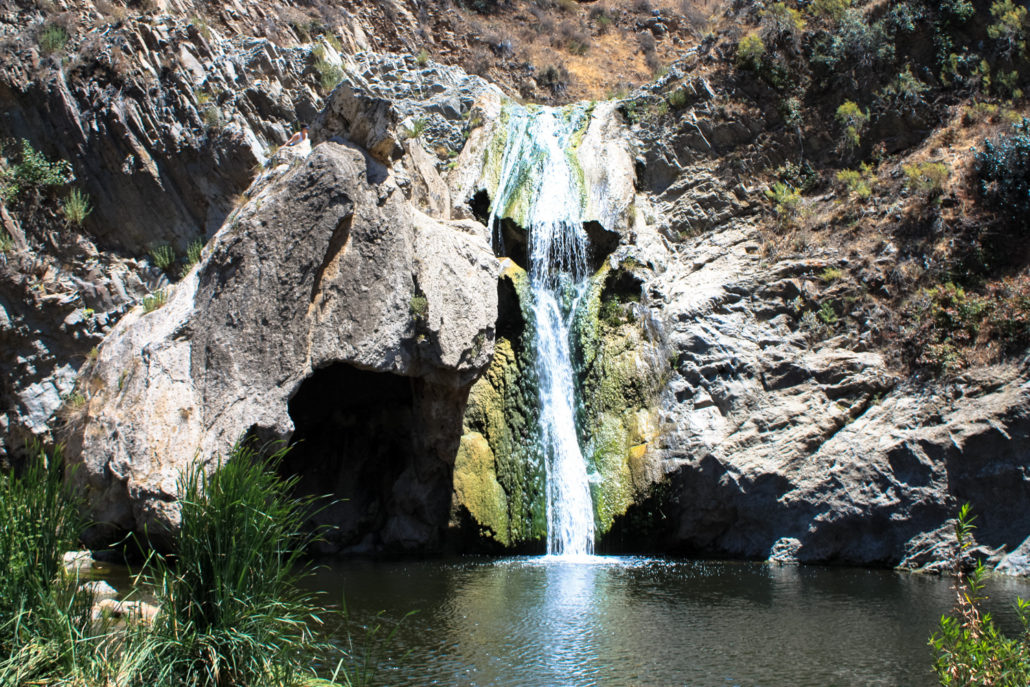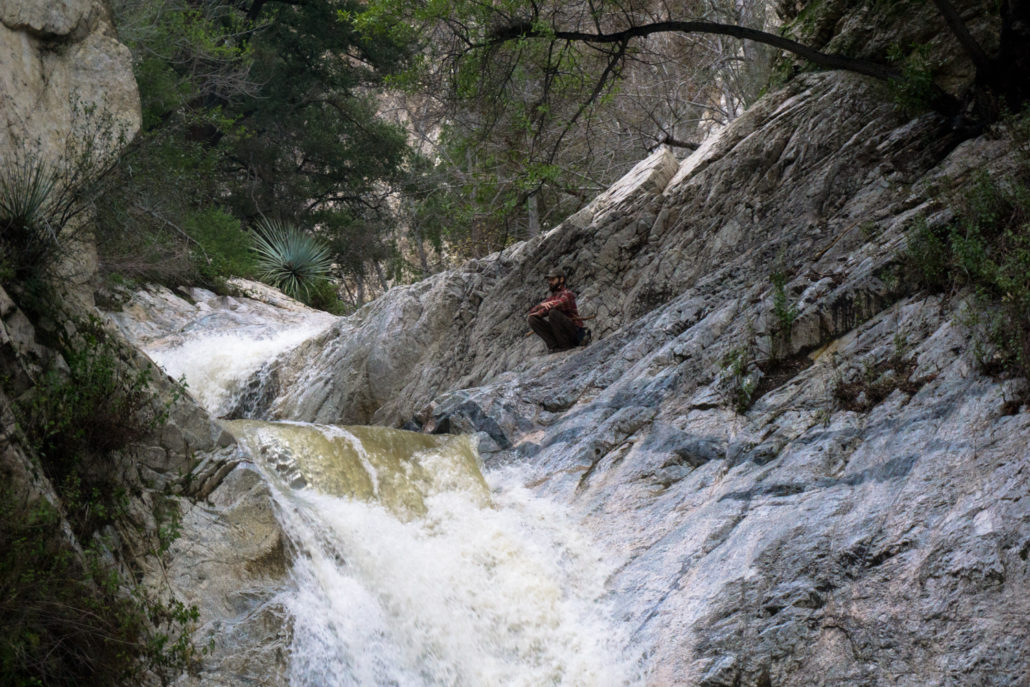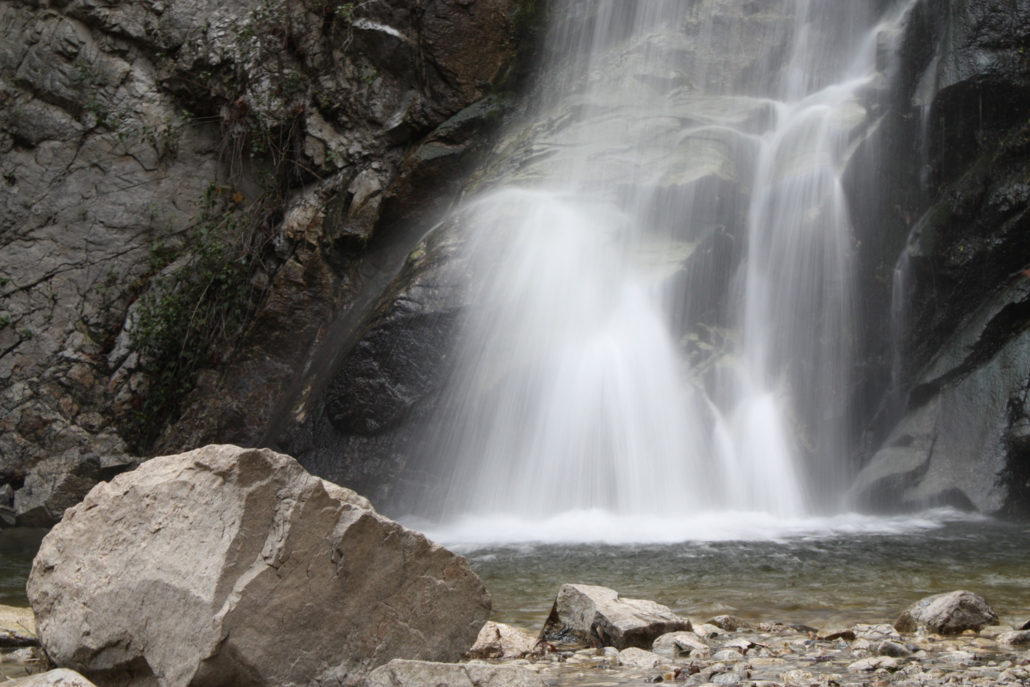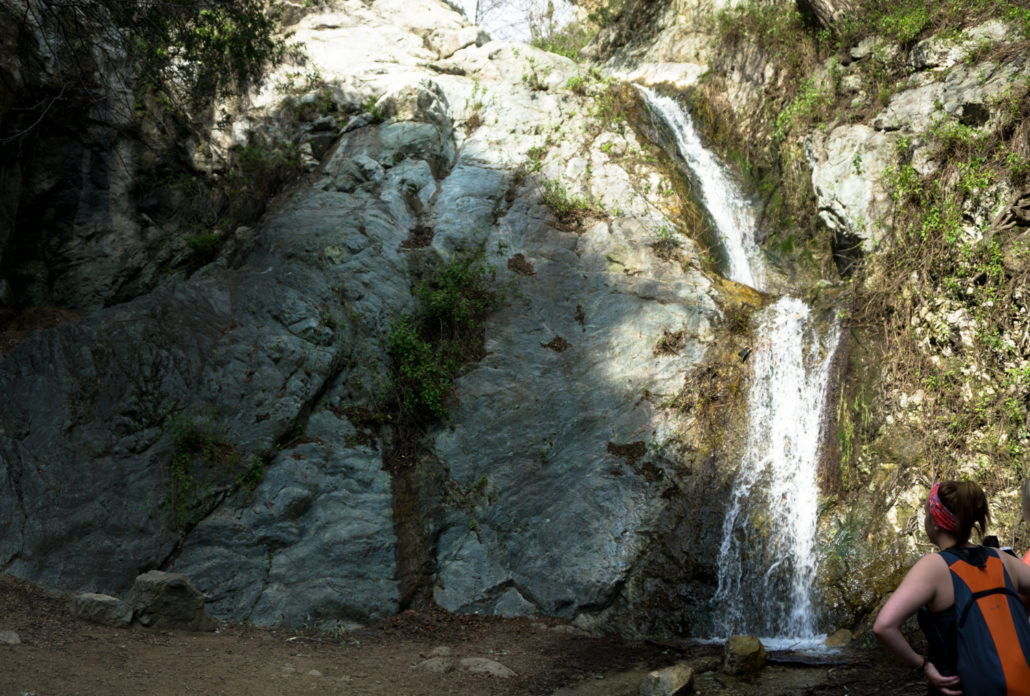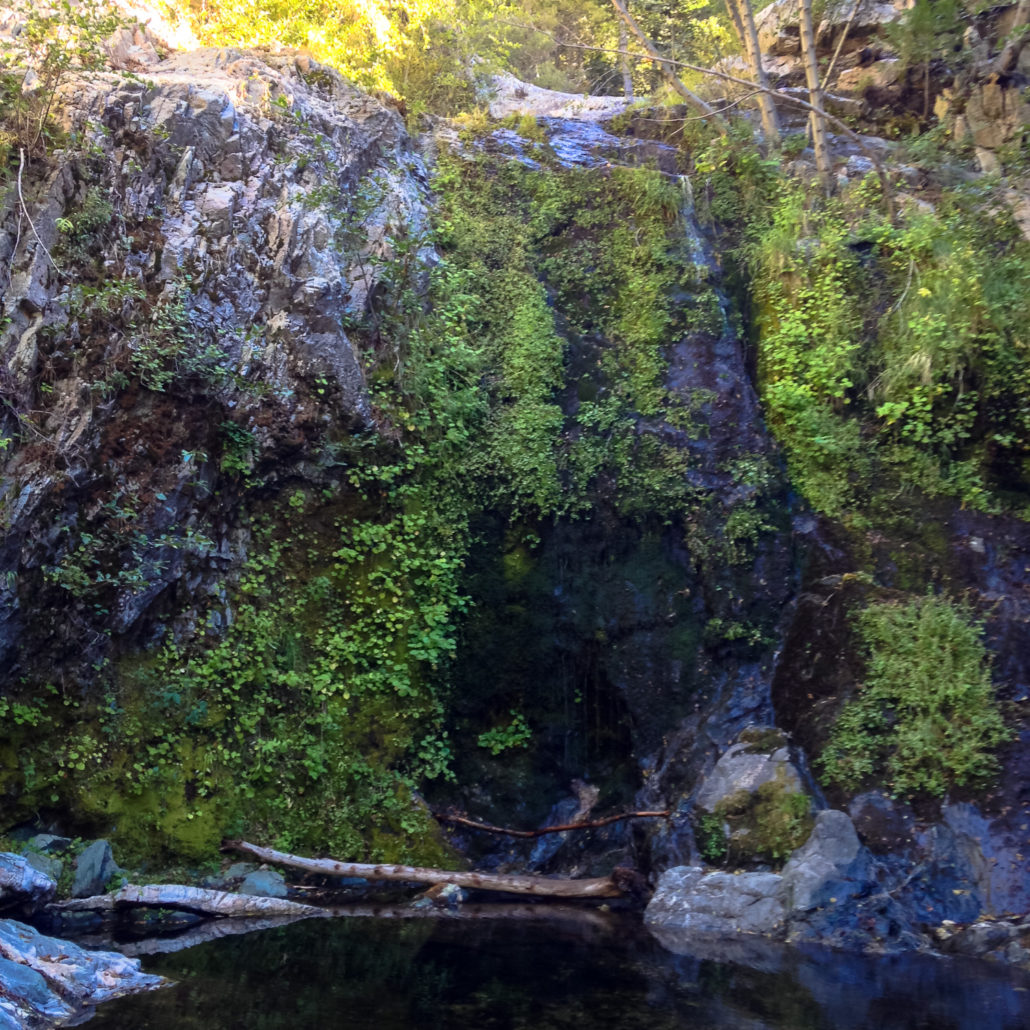Yes, Los Angeles has waterfalls.
Visitors, travelers, and newly transplanted Angelenos from other parts of the country often mistake the summer-brown landscape and months of drizzle-free days for a desert climate, but on average the L.A. region gets just under 15 inches of rain a year. A desert we are not.
So yes, we do have waterfalls here, but you have to treat them a little differently than you would waterfalls in other, wetter parts of the country. If you trek out to one of these cascades in August expecting to see something like Vernal or Multnomah Falls, you’re going to be sorely disappointed — but taken on their own and visited at the right time, these waterfall hikes will delight and maybe even make you fall in love with our special landscape.
While most of these waterfalls do run year-round, they are best visited between January and May (or later, if we’ve had a good El Niño year). For the full effect, you’ll want to head out to these falls 48 hours or so after a solid rain storm. Leaving that time will let some of the mud dry on the trails, but it’s also a safety issue — because most of our rain events here are of the feast-or-famine variety, you’ll want to let some of the water drain out of the canyons before you hike in them. Under no circumstances should you hike these trails during a rainstorm. These canyons are prone to destructive and unpredictable flash flooding, and a downpour dozens of miles away can send a wall of water into these narrow canyons in a matter of minutes.
That said — here are some of our favorite waterfall hikes near Los Angeles:
Santa Ynez Falls
Located inside Topanga State Park but closer to the Pacific Palisades than that rustic-fancy canyon, the hike to Santa Ynez Falls is a fun 2.4 mile out-and-back through shaded oak and sycamore forest to a hidden cascade tucked into a narrow, rocky canyon. This route has plenty of stream crossings, so wear waterproof boots or be OK with getting your feet wet — and watch out for the plentiful poison oak along the trail. To see the falls head-on, you’ll have to get creative with your scrambling and boulder-hopping or just take your boots off and wade a bit, but it’s a terrific journey!
Escondido Falls
The tallest waterfall in the Santa Monica Mountains is a truly beautiful sight. Even when it’s dry, the slow trickle of this cascade flows down a section of rock that looks like melted candle wax covered in ferns, revealing hidden caves and caverns. But when we’ve got some water in the region, it’s an even more lovely ribbon of bridal-veil white, gently falling into a picturesque pool at the base. The 4-mile out-and-back is generally pretty mild, although you will have to hop the creek bed a few times and should expect some mud if it’s recently rained. A tougher climb to the Upper Falls is also available, but it’s an unmaintained and unofficial route that should only be attempted by those with climbing or scrambling experience, and definitely not by those wearing flip flops or tennis shoes.
Paradise Falls
Pro: even in the hottest, driest months, Paradise Falls remains flowing. Con: It’s flowing because the cascade is mostly untreated urban runoff.
But hey, in this climate, we make do with what we can. While it is extremely inadvisable to go swimming in the pool below Paradise Falls, it’s still a lovely place to visit. The canyon is cool and shaded, and the runoff has revitalized a beautiful riparian corridor along a branch of the Arroyo Conejo. The surrounding Wildwood Park also has some of the most interesting and varied landscapes in the region, ranging from majestic mesas to sweeping meadows, miniature forests of cactus and coastal scrub, and even caves.
Trail Canyon Falls
When it’s got a good flow going, Trail Canyon Falls makes a strong case for the most impressive waterfall near Los Angeles. This stunner lies in a branch off Big Tujunga Canyon, and the 4.3 mile trek doesn’t take long to make you feel like you’re out in the middle of nowhere. You’ll hike through a small cabin community and climb up narrow canyon ledges before the trail reveals this marvelous cascade. Keep hiking and you’ll end up right near the top of the waterfall, or you can go-at-your-own-risk on an unmaintained trail down to the base. Little known for years, Trail Canyon has increased in popularity recently, so expect a mild to moderate headache trying to secure one of the few trailhead parking spots nearby.
Millard Canyon Falls
Maybe the best bang-for-your-buck of the L.A. waterfalls, the hike to Millard Canyon Falls is only 1.2 miles roundtrip. Off limits for years due to the Station Fire, the trail has had a lot of love lately from volunteer and Forest Service crews, and the shady route through Millard Canyon is in excellent shape now. This quick hike meanders along a stream, dodging and hopping and squeezing through rocks before dead-ending at the base of this beautiful cascade. It’s great for kids — and those looking for a more full day in the San Gabriels can add on the hike to the Dawn Mine for extra miles, too (and a chance to spot another cascade in the Saucer Branch).
Eaton Canyon Falls
Want to hike in the footsteps of John Muir? Then you’ll want to head to Eaton Canyon Falls. Nestled in the foothills of the San Gabriel Mountains near Pasadena and Altadena, this trail starts at one of the best Nature Centers in the region, then follows a rocky wash into a narrow canyon. You’ll twist and turn through the rocks, and in a surprisingly short distance, come upon this beautiful waterfall. Mr. Muir described this cascade as “a charming little thing, with a low, sweet voice, singing like a bird.” On clear and warm weekend days, you might have trouble hearing that low, sweet voice over the noises of your fellow hikers, but it’s still worth a visit. Just note: do not attempt to climb up above the waterfall under any circumstances. After years of airlifting foolhardy adventurers nearly every summer weekend, authorities put almost everything not inside the canyon floor off-limits. For a longer trek and a break from the waterfall crowds, consider adding on a visit to Henninger Flats, too.
Switzer Falls
This reliable and fun multi-tiered Switzer Falls also happens to be a fantastic introduction to the interior country of the San Gabriel Mountains. Fight for a parking spot at the Switzer picnic area and then leave the picnicking crowds behind for this 3 mile hike, which takes you through some areas still in recovery from the 2009 Station Fire and along the Arroyo Seco, an important regional waterway for generations of Anglo, Hispanic, and Native Americans people who were here long before we arrived. Head deeper into the canyon for more pools and a trail camp if your energy reserves are holding up, or just enjoy the cascade. A decent swimming hole lies at the bottom here, and a smaller, jacuzzi-like pool lies between the two falls.
Santa Anita Canyon (Sturtevant and Hermit Falls)
Santa Anita Canyon is one of the best places to hike in L.A. no matter what time of year it is, but if you’re hunting for waterfalls, it’s an even better destination — year-round Sturtevant and Hermit Falls are both accessible from this region, and both are relatively moderate hikes that should be achievable for most hikers (just remember that there’s a bunch of incline on the way out of the canyon). Both also happen to be in a phenomenally picturesque region that will draw you back time and time again for more hikes. Sturtevant is the more visited of the two, with a shallow pool at its base that’s great for soaking on a warm day. Hermit avoids some of the crowds but unfortunately also tends to draw more of the graffiti-and-litter population. Still, both routes are must-dos for L.A. area hikers — and longer hikes from Chantry Flat can easily turn this into a full day or even overnighter. Just arrive early — this is one of the most notoriously crowded trailheads in Southern California.
Monrovia Canyon Falls
Although it’s one of the smaller waterfalls on the list, Monrovia Canyon Falls is definitely an L.A. area waterfall you won’t want to overlook. Its tiered cascade falls gently into a broad pool. A stream flows down the canyon, nurturing an impressive canopy of old oak and sycamore trees that bend over the canyon floor itself, giving you the impression that you’re hiking through a tunnel of trees on your way to the waterfall. Limited parking and a small entrance fee can help reduce the crowds here — start at the lower parking area for a good 2.6 mile trek, or park in one of the upper lots for an easier nature walk.
Cooper Canyon Falls
If Buckhorn Campground is still closed for the winter when you’re trying to hike here, this will be a bit longer than the 3.1 mile round trip described here, but even then it’s worth the effort. Deep in the central San Gabriel Mountains, this trek in the Pleasant View Ridge Wilderness will make you feel like you’re hundreds of miles away from Los Angeles. Old growth pine trees tower above a boulder-strewn landscape and babbling brooks, and there’s a good chance you’ll encounter snow and ice early in the year, too (so come prepared!). Cooper Canyon Falls is just off the main trail, and requires a fun rope-and-scramble down to a hidden glen where the cascade lands.
Lewis Falls
There are a lot of reasons to overlook Lewis Falls. It’s just a one-mile trail but it’s deep in San Gabriel Canyon, requiring a lengthy drive to get to it. It’s an unmaintained route, so it’s often overgrown and lacking any sort of trailhead sign. But it’s also a surprisingly fun, solitary, and beautiful waterfall in the San Gabriel Mountains — best done as an add-on to a visit to Crystal Lake or another nearby hike. You might need to do a bit of pathfinding and bushwhacking on this one, and you’ll definitely want to do some tick-checks afterward, but for a chance to have this little cascade all to yourself, I’d consider that a decent price of admission, wouldn’t you?
Find Accommodations Near Los Angeles:
Tags: lists, waterfalls



